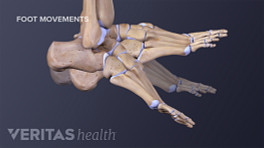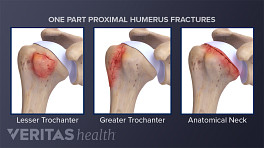Bone health in athletes requires an adequate balance between exertion and rest, as well as good nutrition and proper training form. Athletes also must train in a manner that allows their bodies enough time to adjust to increased levels of exertion in order to avoid injury. If any one of these areas is neglected, stress fractures may develop.
The following are some of the underlying causes of stress fracture development in athletes. Many athletes experiencing stress fractures will have multiple root causes that will need to be addressed before healing and a return to sports can commence.
It is also possible for non-athletes to develop stress fractures during normal daily activities if they have poor bone density due to a condition that weakens the bone, such as osteoporosis or osteopenia. 1 Wedro B. Stress fracture. eMedicineHealth.com. June 11, 2014: http://www.emedicinehealth.com/stress_fracture/article_em.htm. Accessed December 22, 2014.
Stress fractures occur due to low bone density from conditions such as osteoporosis.
In This Article:
Changes in exercise patterns
Stress fractures may occur if athletes rapidly increase their level of activity in one or more of the following ways:
Exercise frequency. Athletes who increase their number of exercise sessions without giving their bodies adequate time to adjust may develop stress fractures. For example, recreational runners who are accustomed to running two or three times a week may develop stress fractures in the feet, ankles, or shins if they abruptly change to a six-day-a-week schedule. 1 Wedro B. Stress fracture. eMedicineHealth.com. June 11, 2014: http://www.emedicinehealth.com/stress_fracture/article_em.htm. Accessed December 22, 2014.
Exercise duration. Increasing the length of individual exercise sessions too quickly can lead to stress fractures. For example, a ballet dancer accustomed to daily 30-minute practice sessions may develop stress fractures if she increases her session length to 90 minutes or more. 1 Wedro B. Stress fracture. eMedicineHealth.com. June 11, 2014: http://www.emedicinehealth.com/stress_fracture/article_em.htm. Accessed December 22, 2014.
Exercise intensity. Even if athletes do not change the frequency or duration of their regular workouts, a change in the level of exertion in those workouts can still lead to stress fractures if the body is not given enough time to adjust to the new level of intensity. For example, recreational athletes who are accustomed to three moderate, 30-minute sessions on an elliptical trainer each week might experience stress fractures if they switch to three intense, 30-minute sessions of sprints mixed with plyometrics. 1 Wedro B. Stress fracture. eMedicineHealth.com. June 11, 2014: http://www.emedicinehealth.com/stress_fracture/article_em.htm. Accessed December 22, 2014. This same phenomenon can occur when athletes dramatically increase their speed, such as increasing the distance an athlete runs over a 30-minute period.
Change of playing surface. Athletes who have grown accustomed to one type of playing surface may develop stress fractures if they make a switch to a new type of playing surface. Examples include switching from grass to clay tennis courts, changing from natural grass to artificial turf, or running outdoors after running on a treadmill all winter. 1 Wedro B. Stress fracture. eMedicineHealth.com. June 11, 2014: http://www.emedicinehealth.com/stress_fracture/article_em.htm. Accessed December 22, 2014.
Change in daily footwear or stepping habits. Sometimes a simple change in footwear and/or amount of walking activity is all that is required to cause a stress fracture. For example, changing from flat shoes to wearing high heels on a daily basis, or a normally sedentary person walking a lot while touring on vacation. 2 American Academy of Orthopedic Surgeons and the American Orthopedic Society for Sports Medicine. Stress fractures of the foot and ankle. July 2009: OrthoInfo. http://orthoinfo.aaos.org/topic.cfm?topic=A00379. Accessed December 22, 2014.
Athletes and anyone else who engages in exercise are advised to ramp up their activities gradually to reduce the risk of stress fracture.
Poor conditioning or training techniques
In addition to the above factors, athletes who lack the athletic conditioning to take on a certain level of sports activity or “overdo it” in a single sport may develop stress fractures, due to lack of cross-training. For example:
Not maintaining a consistent training regime. Athletes who expect to return to their peak-season level of conditioning after the off-season risk developing stress fractures. For example, distance runners who ran a marathon(s) at the end of the fall but only did short 3-to-5-mile training runs during the winter can develop a stress fracture if they try to replicate their previous mileage when the spring running season starts. 1 Wedro B. Stress fracture. eMedicineHealth.com. June 11, 2014: http://www.emedicinehealth.com/stress_fracture/article_em.htm. Accessed December 22, 2014.
Playing the same sport all the time. Year-round athletes who do not change sports with each passing season may develop stress fractures, especially during the childhood and adolescent years. For example, a teenage soccer player who plays on his high school team in the fall, then joins independent traveling teams in the winter and spring, then goes to soccer camp in the summer without ever taking a break from the sport. 3 American Academy of Orthopedic Surgeons and the Pediatric Orthopedic Society of North America. High school sports injuries. August 2012: OrthoInfo. http://orthoinfo.aaos.org/topic.cfm?topic=A00056. Accessed December 22, 2014.
Not using the right equipment or using worn-out equipment. Playing sports with old, worn-out equipment, ill-fitting equipment, or no equipment at all can result in stress fractures. For example, a ballerina may develop stress fractures in her toes and/or metatarsals if she dances in worn-out toe shoes, or a recreational runner may develop stress fractures if he chooses cheap running shoes that do not provide adequate arch support. 1 Wedro B. Stress fracture. eMedicineHealth.com. June 11, 2014: http://www.emedicinehealth.com/stress_fracture/article_em.htm. Accessed December 22, 2014.
Poor technique. Athletes who do not follow established techniques when playing their sport can develop stress fractures. For example, gymnasts with sloppy landing techniques, dancers who “cheat” their foot positions, or track athletes who have trouble clearing hurdles. Stress fractures related to poor technique are especially common among recreational athletes and early-career athletes. 1 Wedro B. Stress fracture. eMedicineHealth.com. June 11, 2014: http://www.emedicinehealth.com/stress_fracture/article_em.htm. Accessed December 22, 2014.
Poor bone density
Early-onset osteoporosis in adolescent girls and/or elite female athletes related to high levels of athletic intensity and poor nutrition can cause stress fractures. This phenomenon is often called the female athletic triad and it commonly occurs among female athletes who participate in sports where low body weight offers a competitive advantage, such as ballet, distance running, figure skating, or gymnastics.
In the female athletic triad, female athletes may engage in disordered eating (anorexia/bulimia) combined with intense levels of exercise in order to maintain a low body-fat percentage. Disordered eating and intense physical activity can suppress the hormones that control the menstrual cycle (amenorrhea), a biochemical state similar to menopause that results in the lack of a regular menstrual periods. This can rob the bones of calcium, weakening them and increasing the chance of stress fractures. 4 Romani W et al. Mechanisms and management of stress fractures in physically active persons. J Athl Train. 2002 Jul-Sep; 37 (3): 306-314. , 5 Sallis RE, Jones K. Stress fractures in athletes: how to spot this underdiagnosed injury. Postgrad Med. 1991; 89:185-192. http://www.ncbi.nlm.nih.gov/pubmed/2020647. Abstract accessed December 23, 2014.
- 1 Wedro B. Stress fracture. eMedicineHealth.com. June 11, 2014: http://www.emedicinehealth.com/stress_fracture/article_em.htm. Accessed December 22, 2014.
- 2 American Academy of Orthopedic Surgeons and the American Orthopedic Society for Sports Medicine. Stress fractures of the foot and ankle. July 2009: OrthoInfo. http://orthoinfo.aaos.org/topic.cfm?topic=A00379. Accessed December 22, 2014.
- 3 American Academy of Orthopedic Surgeons and the Pediatric Orthopedic Society of North America. High school sports injuries. August 2012: OrthoInfo. http://orthoinfo.aaos.org/topic.cfm?topic=A00056. Accessed December 22, 2014.
- 4 Romani W et al. Mechanisms and management of stress fractures in physically active persons. J Athl Train. 2002 Jul-Sep; 37 (3): 306-314.
- 5 Sallis RE, Jones K. Stress fractures in athletes: how to spot this underdiagnosed injury. Postgrad Med. 1991; 89:185-192. http://www.ncbi.nlm.nih.gov/pubmed/2020647. Abstract accessed December 23, 2014.











